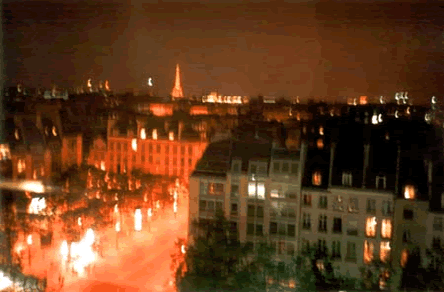
Chris Marker’s strange documentary/autoethnographic Sans Soleil weaves together the letters of the fictional cameraman Sandor Krasna, the narration of the letters and commentary by Alexandra Stewart, images captured by Marker and others (including some found footage) that move from an automated JFK in a shopping mall in Japan, to the scenes of Vertigo in San Francisco, to newsfootage of guerrilla warfare in Guinea-Bissau, to the ghostly images of 3 children in a town in Iceland that will soon be buried by a volcano, to solarized kamikaze pilots and a giraffe struck down by a poacher’s shots. What connects all of these images? What connects the images and the words spoken?
Krasna notes, “I’ve been around the world and now only banality still interests me. On this trip, I’ve tracked it with the relentlessness of a bounty hunter” (Marker). The fictional Krasna documents the everyday in his letters and postcards, he moves throughout time and space, recording the banal in images and words. His return to Tokyo is a return home to homelessness: sessions watching the “memory box”-the TV-that makes “you feel as if it’s watching you” and walking through the streets, seeing the dancers who want you to see them back as if they do not notice you looking.
The documentary becomes the dream, the wish-image of the sleeping
traveler:
More and more my dreams find their setting in the department stores of
Tokyo…I begin to wonder if the dreams are really mine, or if they’re
part of a totality, a giant collective dream of which the entire city
may be a projection…The same companies own the stores and the railroads
that bear their name. The train inhabited by sleeping people puts together
all the fragments of dreams, makes a single film of them, the ultimate
film. (Marker)
The “sunless” world must be solarized in “the zone.” The images that have been made into “history” must be re-suffused with the sunshine of memory.